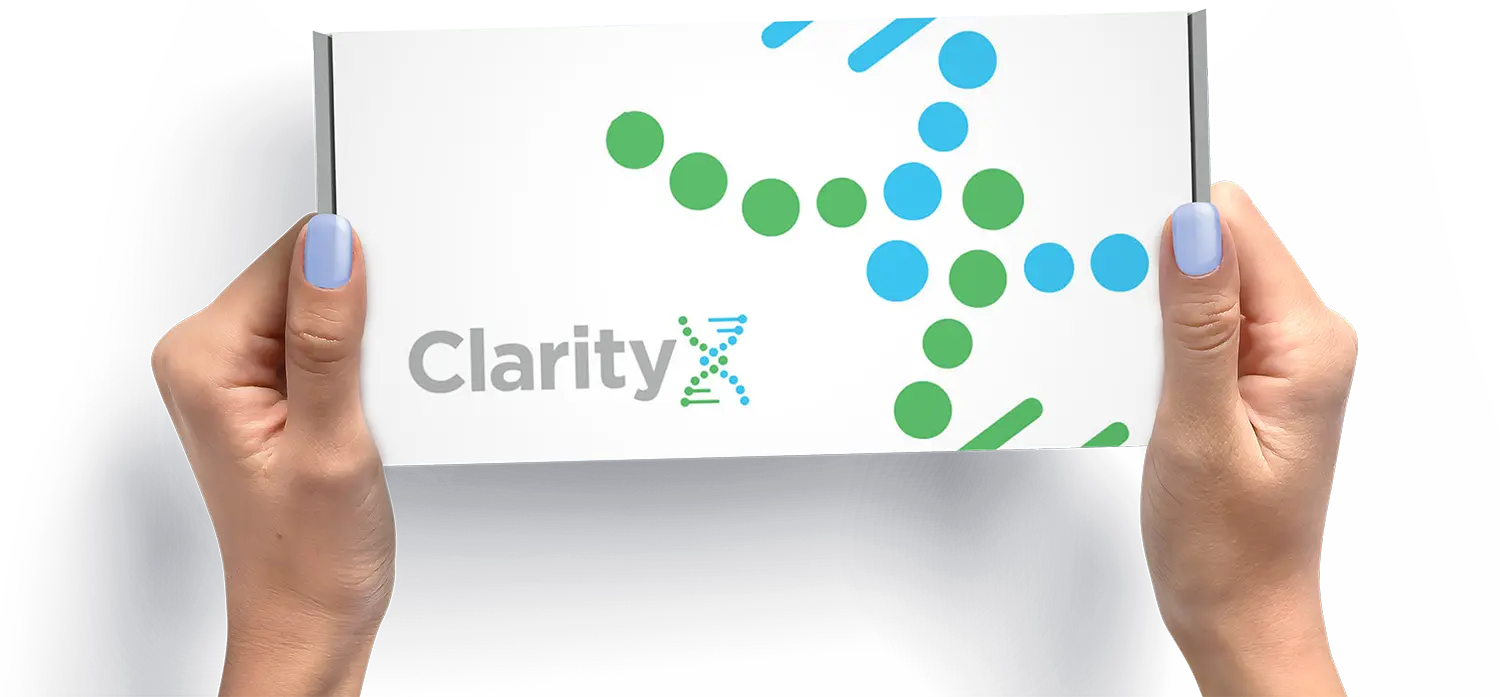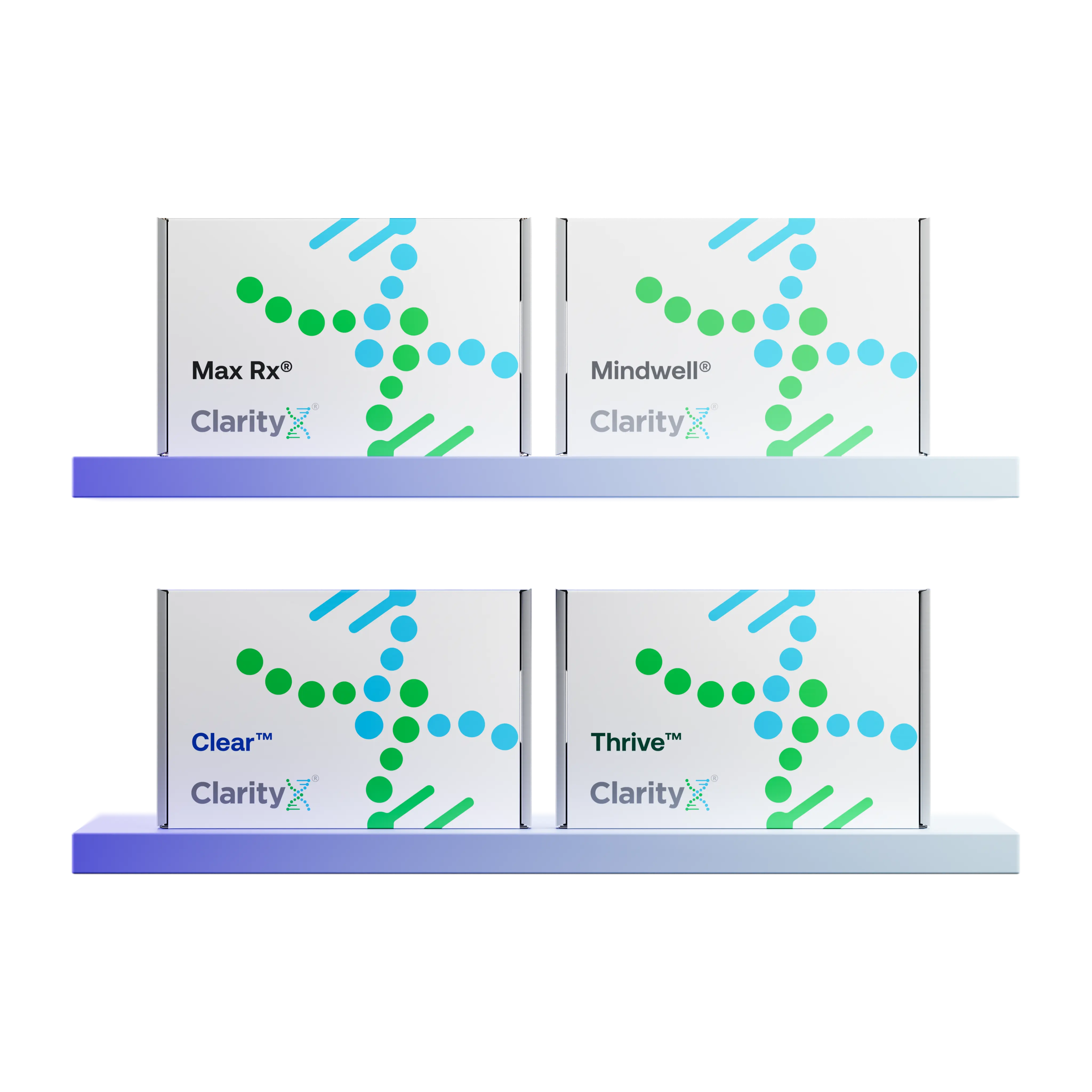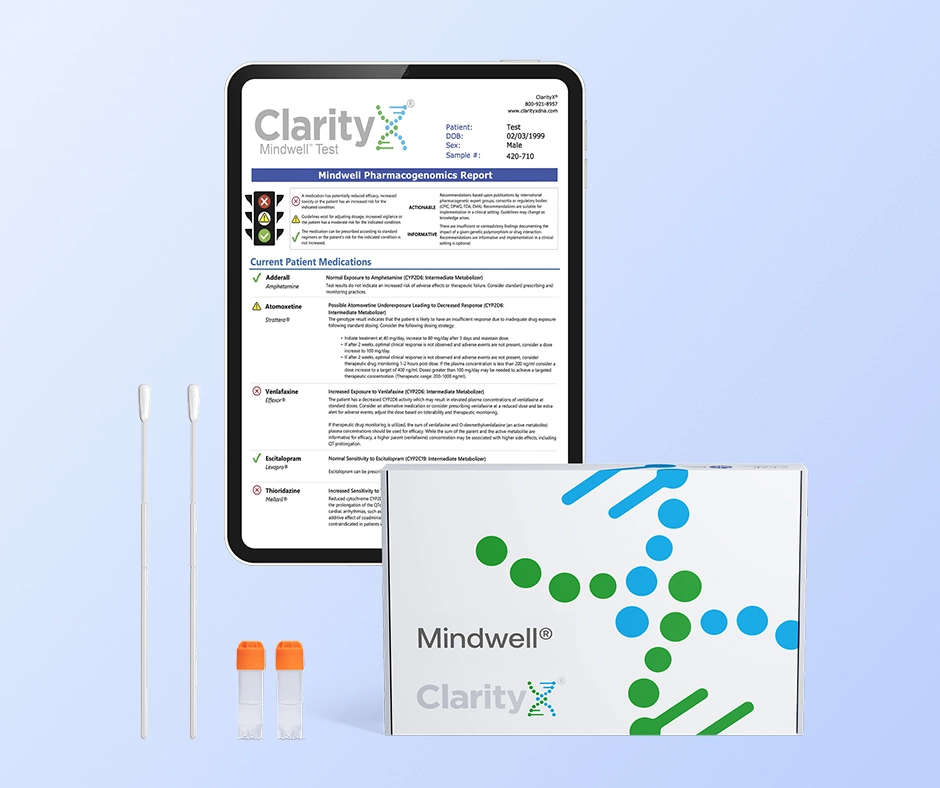Key Highlights
- Attention deficit hyperactivity disorder (ADHD) often presents with more inattentive and emotional symptoms in women than men.
- Many adult women with ADHD develop "masking" strategies to hide their struggles, which can delay a diagnosis.
- Gender bias in diagnostic criteria historically made it harder to get an accurate diagnosis of ADHD for women.
- Hormonal changes throughout a woman's life can significantly impact the severity of ADHD symptoms.
- Effective management involves a combination of treatments, including medication, therapy, and lifestyle changes.
- Co-occurring mental health conditions like anxiety and depression are common in women with this hyperactivity disorder.
Introduction
Have you ever felt constantly disorganized, forgetful, or overwhelmed, even when you're trying your hardest? For many women, these aren't just personality quirks but signs of attention deficit hyperactivity disorder (ADHD). The classic ADHD symptoms we often hear about don't always match the experience of women, making it a hidden struggle that can impact mental health and daily life. This guide will explore how ADHD uniquely affects women, from subtle signs to getting the right support.
Understanding ADHD in Women
ADHD in women can look very different from the way it does in men. Instead of outward hyperactivity, you might experience more symptoms of attention deficit, such as difficulty focusing, forgetfulness, and disorganization. These signs are often less disruptive, which is a primary reason why they get overlooked.
Because these ADHD symptoms are subtle, many women go undiagnosed until adulthood. This can take a toll on your mental health, leading to feelings of inadequacy or anxiety. Understanding these differences is the first step toward a proper diagnosis of ADHD and finding the support you need.
Defining ADHD and Its Types
Attention deficit hyperactivity disorder (ADHD) is a neurodevelopmental disorder that affects your ability to pay attention, control impulsive behaviors, and, in some cases, manage excessive energy. The symptoms usually start in childhood and can continue into adulthood, interfering with school, work, and relationships.
There are three main types of this hyperactivity disorder. The first is the predominantly inattentive presentation, where you primarily struggle with focus, organization, and finishing tasks. These inattentive symptoms are very common in women.
The second type is the predominantly hyperactive-impulsive presentation, characterized by restlessness, talking too much, and acting without thinking through the consequences. The third is the combined presentation, where you experience a mix of both inattentive symptoms and symptoms of impulsivity and hyperactivity. Recognizing these types helps in understanding the wide range of ADHD experiences.
How ADHD Differs in Females
For years, ADHD was seen as a condition that mostly affected young boys, which created a significant gender bias in how it was studied and diagnosed. The typical image of a child with ADHD was a boy who couldn't sit still and was disruptive in class. This focus on external, hyperactive symptoms meant that girls, who often show their symptoms differently, were frequently missed.
Gender differences play a huge role in symptom presentation. Instead of obvious hyperactive symptoms, girls and women are more likely to have issues with attention deficit. This can look like daydreaming, being forgetful, or struggling to follow conversations. These signs are internal and less likely to cause trouble, so they are often mistaken for personality traits like being "scatterbrained" or "shy."
This oversight can lead to a lifetime of misunderstood struggles and related mental health issues. Many women don't get diagnosed until their own child is diagnosed, and they recognize the same patterns in themselves. Understanding these differences is crucial for providing better care.
Prevalence of ADHD Among Women in the United States
The prevalence of ADHD among women in the United States has become more recognized in recent years. While boys are diagnosed more often in childhood, the gap narrows significantly in adulthood. This suggests that many young girls with ADHD were simply overlooked, only to seek help as adult women when life's demands become overwhelming.
A systematic review of ADHD studies has highlighted that women often internalize their symptoms. This means that instead of acting out, they may experience anxiety, low self-esteem, and feelings of inadequacy. These internal struggles are just as debilitating but are harder for others to see.
The journey to diagnosis for women often starts later in life. As demands at work and home increase, coping mechanisms may start to fail, revealing the underlying challenges.
Common Symptoms of ADHD in Women
When you think of ADHD, you might picture someone who can't sit still, but for women, the symptoms are often much more subtle. The most common ADHD symptoms in women tend to fall under the umbrella of inattention, though hyperactivity and impulsivity can present in less obvious ways.
Beyond focus issues, many women with this hyperactivity disorder also grapple with intense emotions, which can be mistaken for mood disorders. Understanding these distinct symptom categories of inattention, hyperactivity-impulsivity, and emotional dysregulation is key to recognizing ADHD in yourself or a loved one.
Inattentive Symptoms Explained
The symptoms of inattention are often the most prominent for women with ADHD. This goes beyond simple forgetfulness and can deeply impact your daily functioning. You might find it incredibly difficult to follow through on instructions or complete tasks, not because you don't want to, but because your attention deficit makes it a constant battle.
Having a hard time with focus can manifest in several ways. Maybe you make careless mistakes at work, struggle to listen during conversations, or find yourself constantly daydreaming when you should be concentrating. It can feel like your brain is always jumping from one thought to the next, making it nearly impossible to stay on track.
This lack of focus can be incredibly frustrating and affect your productivity and relationships. Common signs include:
- Frequently misplacing essential items like keys, your phone, or your wallet.
- Having trouble organizing tasks and managing your time effectively.
- Getting easily distracted by external stimuli or your own unrelated thoughts.
- Forgetting appointments, deadlines, and other daily activities.
Hyperactive-Impulsive Symptoms
Hyperactivity in women with this hyperactivity disorder doesn't always look like bouncing off the walls. Instead, it often feels like an internal restlessness you can't shake. Your mind might be racing with a dozen different thoughts at once, or you might find it impossible to sit through a meeting without fidgeting.
Similarly, the symptoms of impulsivity can be more subtle. You might find yourself interrupting others frequently, not out of rudeness, but because the thought just has to come out. Impulsive shopping or making rash decisions without fully considering the consequences are also common ADHD symptoms in women.
These hyperactive symptoms are often turned inward or expressed in socially acceptable ways. Examples include:
- Talking excessively, often trying to express many thoughts at once.
- Feeling agitated or impatient when having to wait in line.
- Constantly switching from one activity to another out of boredom.
- Obsessively checking social media or messaging apps.
Emotional and Mood-Related Symptoms
One of the most challenging aspects of ADHD for women is managing emotional symptoms. You might experience intense mood swings or feel easily flustered and overwhelmed by everyday stressors. This emotional sensitivity is often misunderstood by others and can be dismissed as being "overly emotional."
These feelings are not just a personality trait; they are a core part of the ADHD experience for many women. The difficulty with emotional regulation can lead to symptoms of anxiety and even depressive symptoms, which is why ADHD is sometimes misdiagnosed as other mood disorders.
This constant emotional rollercoaster can be exhausting and isolating. Common emotional symptoms include:
- High sensitivity to criticism or perceived rejection.
- Sudden and intense feelings of irritability or frustration.
- A tendency to feel overwhelmed by your emotions.
- Struggling with low self-esteem and feelings of inadequacy.
Gender Differences: ADHD in Women vs. Men
The gender differences in how ADHD presents are significant and have led to countless women struggling in silence. While men and boys more commonly display overt hyperactivity, women's ADHD symptoms are often internalized. This leads to different challenges and, unfortunately, different rates of diagnosis.
This isn't just about behavior; it's about how attention deficit and emotional struggles manifest. Women are more likely to be diagnosed with co-occurring mental health conditions like anxiety and depression, as their core ADHD symptoms are missed. The following sections will explore these differences in symptom presentation and the societal factors that contribute to misdiagnosis.
Symptom Presentation and Behavioral Patterns
Symptom presentation in ADHD is heavily influenced by gender. Boys with ADHD are often identified because their behavior is disruptive; they might be physically hyperactive, impulsive, and have trouble following classroom rules. These externalizing behaviors are easy for teachers and parents to spot.
In contrast, girls and women tend to have different behavioral patterns. Their ADHD symptoms are often internal. Instead of running around, a girl with ADHD might be quietly daydreaming at her desk. Her struggles with focus might lead to making careless mistakes or forgetting assignments, which can be misinterpreted as laziness or a lack of intelligence.
This gender bias in what is considered "typical" ADHD has created a system where women must often work harder to have their symptoms recognized. Many women also develop masking strategies, where they put in extra effort to hide their disorganization or inattention, further complicating the path to an accurate diagnosis.
Reasons for Misdiagnosis or Overlooked Cases
A primary reason for the misdiagnosis of ADHD in adult women is that their symptoms are frequently mistaken for other conditions. Because women with ADHD often experience intense emotional fluctuations and anxiety, they are commonly diagnosed with mood disorders like depression or anxiety instead. The underlying ADHD remains untreated.
Gender bias in the diagnostic criteria has also played a significant role. The classic ADHD model was based on research conducted predominantly on boys, focusing on hyperactivity and impulsivity. The quieter, inattentive symptoms more common in women weren't given the same weight, causing many cases to be overlooked.
As a result, many women don't receive a diagnosis until they are well into adulthood. Often, it's the mounting pressures of a career, family, and household management that finally make their symptoms unmanageable, prompting them to seek answers for struggles they've faced their entire lives.
Societal Expectations and Impact on Diagnosis
Societal expectations place an enormous burden on women with ADHD. Women are often expected to be organized, nurturing, and adept at multitasking, all skills that ADHD can make incredibly challenging. To meet these expectations, many women develop sophisticated masking techniques to hide their disorganization, forgetfulness, and inattention.
This constant effort to appear "normal" is exhausting and can take a serious toll on mental health. It also makes it much harder for health care providers to see the full picture. A woman might present with symptoms of anxiety or depression from the stress of trying to keep up, which can lead professionals down the wrong diagnostic path.
The pressure to conform can prevent women from seeking a diagnosis of ADHD in the first place. They may internalize their struggles, believing they are simply failing to live up to expectations. This cycle of self-blame and hidden symptoms is a major barrier to getting the right help.
Early Signs and Recognition in Adult Women
For many adult women, receiving an ADHD diagnosis feels like finding a missing puzzle piece that explains a lifetime of struggles. The early signs of ADHD were likely there all along, but they were subtle and easily missed in young girls.
Symptoms like being a "daydreamer," "chatty," or "sensitive" in childhood might not have raised alarms. However, these are often the first signs of an attention deficit that persists and evolves over time. Next, we’ll look at how these subtle childhood symptoms can become more apparent challenges in adolescence and adulthood.
Subtle Childhood Symptoms That Persist
Looking back, you might recognize subtle childhood symptoms that now make perfect sense. Were you often told you were a daydreamer or "in your own world"? This is a classic sign of the inattentive symptoms common in girls. You might have been able to get by in school, but it likely took a lot more effort to stay focused.
Family members might have described you as disorganized or forgetful, with a messy room or a habit of losing your belongings. While these traits are common in many children, in girls with ADHD, they persist and can cause significant frustration in daily life. You may have also been labeled as overly talkative or emotional.
These patterns don't just disappear. They follow you into adulthood, where the demands of managing a job, household, and relationships can make these once-subtle symptoms feel completely overwhelming. Recognizing this history is a key part of the diagnostic process.
Challenges During Adolescence
Adolescence is a time of major change, and for girls with ADHD, it can be particularly tough. The challenges of ADHD often become more pronounced as academic and social demands increase. Suddenly, the need to organize complex assignments, manage time for studying, and navigate intricate social relationships can feel impossible.
Poor academic performance is a common struggle. A teenage girl with ADHD might understand the material but struggle to turn in homework on time or study effectively for exams. This can lead to frustration and a drop in self-esteem, as she may feel she isn't as smart as her peers.
Social relationships can also be difficult. Impulsivity might lead to saying the wrong thing, and trouble with emotional regulation can make her seem "dramatic" or "oversensitive." This can make it hard to form and maintain friendships, sometimes leading to social rejection or bullying.
Navigating Adulthood with ADHD
As adult women, the challenges of ADHD can permeate every aspect of daily life. Poor time management can make you chronically late for work or appointments, and you might constantly underestimate how long tasks will take. At home, you may struggle with clutter and disorganization, feeling like you can never catch up on household chores.
In the workplace, difficulties with focus and follow-through can impact your career. You might have a dozen great ideas but find it hard to see a single project to completion. This can lead to feelings of being an "imposter" and prevent you from reaching your full potential.
These external struggles often fuel internal ones. Many women with ADHD battle negative thought patterns, telling themselves they are lazy, incompetent, or a failure. This constant self-criticism is exhausting and can have a profound impact on your self-esteem and overall well-being.
ADHD Through Life Stages in Women
ADHD isn't a static condition; its symptoms and challenges can shift and change as you move through different life stages. What might have looked like daydreaming in a teenage girl can transform into overwhelming stress for a mother juggling work and family.
Understanding how this hyperactivity disorder evolves from adolescence through the college years and into motherhood is crucial. Recognizing these patterns can help you anticipate challenges and find strategies to improve your quality of life at every stage. Let's explore how ADHD symptoms manifest during these key periods.
ADHD in Teenage Girls
For teenage girls, the symptoms of ADHD often intensify due to hormonal shifts and increasing academic and social pressures. The inattentiveness that was manageable in elementary school can become a major obstacle to good academic performance in high school, where the workload is heavier and requires more independent organization.
Beyond academics, the impact on mental health can be severe. Teenage girls with ADHD are at a higher risk for anxiety, depression, and low self-esteem. They may feel different from their peers and struggle to fit in, leading to social isolation.
Their emotional dysregulation can be mistaken for typical teenage moodiness, but it is often more intense and persistent. This can strain relationships with family and friends, leaving them feeling misunderstood and alone. Early recognition and support during these years are vital for their long-term well-being.
Implications During College Years
The transition to college can be a shock to the system for many young women with ADHD. The lack of structure that was present in high school disappears, and suddenly they are responsible for managing their own time, getting to class, and completing long-term projects without reminders. This newfound freedom can be overwhelming.
Poor time management skills can lead to procrastination, missed deadlines, and a decline in academic performance. The constant struggle to keep up can lead to immense stress and anxiety. Some may try to compensate by pulling all-nighters, which only worsens their ability to focus.
This is also a period where some women may turn to unhealthy coping mechanisms. The impulsivity associated with ADHD can increase the risk for substance use, as they may seek ways to quiet their racing minds or fit in socially. Without the right support, the college years can be a period of significant struggle.
ADHD in Motherhood and Work Life
Juggling motherhood and a career is challenging for anyone, but for women with ADHD, it can feel like an impossible feat. The constant demands of daily life managing schedules, preparing meals, keeping the house in order, and meeting work deadlines can be overwhelming for a brain that struggles with organization and focus.
This often leads to chronic stress and a feeling of being constantly behind. Many mothers with ADHD feel a deep sense of guilt or inadequacy, believing they are failing their families. It's common for a woman to first seek a diagnosis when she recognizes her own struggles in her child who has been diagnosed with ADHD.
The constant pressure can also contribute to other health conditions. The mental load of trying to manage everything can lead to burnout, anxiety, and depression. Recognizing that these challenges are not a personal failing but a result of ADHD is the first step toward finding better strategies and seeking support.
Diagnosing ADHD in Women
Getting an official ADHD diagnosis as a woman can be a journey, but it is a crucial step toward understanding yourself and getting the right help. Because symptoms in women are often subtle and internalized, a diagnosis requires a thorough evaluation from a health care professional who understands the nuances of how ADHD presents in females.
The process involves more than just a simple checklist. It typically includes a deep look at your medical history, your experiences from childhood to the present, and a careful assessment of your symptoms. Let's break down the steps involved and the tools used to reach an accurate diagnosis.
Steps in the Diagnostic Process
The journey to a diagnosis of ADHD usually begins with a comprehensive clinical assessment with a qualified mental health professional. This is not a quick process, as the clinician needs to get a full picture of your life and challenges.
During the assessment, your provider will review your medical history to rule out other conditions that could be causing your symptoms. They will ask detailed questions about your experiences in childhood, school, work, and your relationships. It can be helpful to gather old report cards or talk to family members beforehand to get a clearer picture of your younger years.
A thorough evaluation will involve several key steps to ensure an accurate diagnosis. These often include:
- A detailed interview about your current symptoms and how they impact your daily life.
- Using standardized behavior rating scales or ADHD symptom checklists.
- Gathering information from a spouse, parent, or close friend who knows you well.
- Administering psychological tests to assess cognitive skills and rule out learning disabilities.
Common Barriers to Diagnosis
One of the biggest barriers to receiving a diagnosis of ADHD for women is the high rate of misdiagnosis. Since symptoms like emotional dysregulation and inattention can overlap with other mental health conditions, many women are incorrectly diagnosed with anxiety, depression, or even borderline personality disorder. Their ADHD remains hidden and untreated.
Symptom masking is another significant hurdle. Many women spend their lives developing complex strategies to compensate for their ADHD. They might be perfectionists at work to avoid making careless mistakes or create rigid routines to manage disorganization. While these strategies can help them function, they hide the true extent of their struggles from health care providers.
Finally, a lack of awareness within the health care system about how ADHD presents in women can be a major problem. Some providers may still hold outdated views based on the male-centric model of ADHD, making them less likely to recognize the condition in their female patients.
Screening Tools and Clinical Assessment
To guide an ADHD diagnosis, clinicians use a set of diagnostic criteria outlined in the Diagnostic and Statistical Manual of Mental Disorders (DSM-5). These criteria detail the specific symptoms of inattention and hyperactivity-impulsivity that must be present, as well as the requirement that symptoms began in childhood and impact functioning in multiple settings.
In addition to a clinical assessment, various screening tools can help identify potential signs of ADHD. These often take the form of self-report questionnaires or rating scales that you, and sometimes a family member, will fill out. These tools provide valuable data on the frequency and severity of your symptoms.
However, these tools are not enough on their own. An experienced clinician will interpret the results in the context of your personal history and a detailed interview. They understand that women may underreport symptoms or describe them in ways that don't perfectly fit the standard checklists, making a skilled clinical judgment essential for an accurate diagnosis.
Parenting When You Have ADHD
Parenting is one of the most demanding jobs in the world, and doing it with ADHD can feel especially overwhelming. The challenges with organization, concentration, and mood regulation can make the chaos of daily life with children even harder to manage. You might struggle to help your child with homework because of your own focus issues or feel overwhelmed by the clutter and noise. It's easy to fall into negative thought patterns and feel like you're not a good enough parent.
However, managing your own ADHD is the best thing you can do for your family members. Establishing consistent routines, even if they are simple, can bring a sense of order to your home. Don't be afraid to ask for help dividing parenting duties with a partner, lean on friends, or join support groups for parents with ADHD. Taking time for yourself to manage your symptoms through exercise, therapy, or medication is not selfish; it's essential for the well-being of your entire family.
ADHD Symptom Masking and High Functioning ADHD in Women
Many women with ADHD become experts at symptom masking, which is the act of hiding their struggles to fit in. You might overcompensate by being a perfectionist, creating elaborate organizational systems, or appearing overly polite to hide impulsive thoughts. On the outside, you may look like you have it all together—this is sometimes referred to as high functioning ADHD. You might excel in your career and be seen as successful by others.
But this success comes at a high cost. The constant effort to maintain this facade is mentally and emotionally draining, often leading to anxiety, exhaustion, and burnout. While you may be "functioning," your quality of life suffers. You live with the internal chaos of racing thoughts, disorganization, and a persistent feeling of being an imposter. This is why high functioning ADHD is so often missed; the struggle is invisible to everyone but you.
Hormonal Influence on ADHD in Women
Hormonal changes throughout a woman's life can have a significant impact on ADHD symptoms. Many women notice that their symptoms of inattention, irritability, and mood swings become more intense at certain points in their menstrual cycle. These fluctuations can also be pronounced during major life stages like puberty, pregnancy, and menopause, making symptoms harder to manage.
During pregnancy, some women report an improvement in their symptoms due to rising estrogen levels, while others find the "baby brain" fog makes their ADHD worse. As women approach menopause, the decline in estrogen can lead to a noticeable increase in challenges with focus and memory. These hormonal shifts are often mistaken for other health conditions or emotional instability, which can delay or complicate an ADHD diagnosis. Understanding this connection is key to getting the right support at the right time.
Self-Help Strategies and Tips for Managing ADHD in Women
While professional treatment is crucial, there are many self-help strategies and lifestyle changes you can make to manage your ADHD symptoms. Taking charge of your well-being can be incredibly empowering. Simple adjustments to your daily routine can make a big difference in your ability to focus, manage your energy, and feel more in control.
Making your physical health a priority is a great place to start. Getting regular exercise, eating a balanced diet, and ensuring you get enough sleep can help regulate your mood and improve concentration. Beyond that, developing practical systems for time management and organization can reduce daily stress.
- Get organized: Break down large projects into smaller steps and use planners or apps to track deadlines.
- Prioritize sleep: Aim for 7-9 hours of quality sleep per night and establish a relaxing bedtime routine.
- Exercise regularly: Physical activity can boost dopamine, improving focus and reducing restlessness.
- Eat for your brain: Maintain stable energy with a balanced diet and limit sugar and caffeine.
The 20-Minute Rule and Other ADHD Life Hacks for Women
Living with ADHD means your brain works differently, so you need strategies that work with it, not against it. One popular time management technique is the "20-minute rule," where you commit to working on a task for just 20 minutes. This makes overwhelming projects feel more approachable and helps you break through the initial paralysis of getting started. Often, once you begin, you'll find the motivation to keep going.
Improving your ADHD experience is all about finding clever life hacks that simplify your day and reduce stress. These small lifestyle changes can add up to a big improvement in your quality of life.
- Use visual timers: Seeing time pass can help you stay on track.
- "Everything has a home": Designate a specific spot for essentials like keys and wallets to avoid losing them.
- Externalize your brain: Use sticky notes, whiteboards, and phone reminders for everything.
- Declutter one small area: Instead of tackling a whole room, organize one drawer or shelf at a time.
Treatment Options for ADHD in Women
There are several effective treatment options available for women with ADHD. ADHD medication is often a first-line treatment, as it can help improve focus, reduce impulsivity, and manage hyperactivity by balancing brain chemicals. However, medication is not a cure, and it works best as part of a comprehensive treatment plan. These medications fall into two main categories: stimulants and non-stimulants.
Stimulant medications are the most commonly prescribed and often the most effective. They work by increasing the availability of key neurotransmitters, primarily dopamine and norepinephrine, which are essential for focus, motivation, and executive function. Stimulants are fast-acting and include two main classes:
Amphetamines (e.g., Adderall, Vyvanse)
Methylphenidates (e.g., Ritalin, Concerta)
Non-stimulant medications are an important alternative for women who cannot tolerate stimulants, have a co-existing anxiety disorder that stimulants might worsen, or prefer a non-controlled substance. These drugs, such as Atomoxetine (Strattera) or Viloxazine (Qelbree), work by increasing levels of norepinephrine. While they may take longer to show results, they offer 24-hour coverage and generally have a smoother, less "up-and-down" effect.
The most effective approach is often a combination of treatments. In addition to medication, many women benefit from therapy. Cognitive behavioral therapy (CBT) is particularly helpful for developing practical skills to manage challenges with organization, time management, and emotional regulation. ADHD coaching can also provide targeted support for daily life challenges. Finding the right mix of medication, therapy, and lifestyle strategies is key to successfully managing ADHD.
Personalizing ADHD Medication with Pharmacogenetics
Finding the right ADHD medication is often the most difficult and frustrating part of the treatment journey. For many women, this begins a "trial-and-error" process that can take months or even years, all while their symptoms continue to impact their life, career, and self-esteem.
This is where the science of pharmacogenetics (PGx) offers a powerful solution.
Pharmacogenetic testing analyzes your unique genetic makeup through a simple, painless cheek swab to help predict how your body will respond to specific medications. A PGx test like the ClarityX Mindwell® test provides a data-driven report that helps your doctor make a more informed choice from the very beginning.
By using this genetic data, your doctor can move beyond guesswork. They can more accurately select the right type of medication and the right dose for your unique biology, eliminating the frustrating trial-and-error process and helping you find relief faster.
Causes of ADHD (Etiology)
Researchers are still exploring the exact causes of ADHD, but it's widely believed to result from a combination of factors rather than a single cause. Genetic factors play a significant role ADHD often runs in families, so if a close relative has it, you are more likely to have it as well. Studies are also looking into specific genes that may be involved.
Beyond genetic testing for ADHD, scientists are examining differences in brain structure and function, as well as environmental factors. Things like premature birth, low birth weight, and exposure to certain substances during pregnancy may increase the risk. ADHD is not caused by poor parenting, too much sugar, or a chaotic home life, although these factors can sometimes worsen symptoms. It is a complex neurodevelopmental disorder with deep biological roots.
Conclusion
In summary, understanding ADHD symptoms in women is crucial for promoting awareness and facilitating proper diagnosis and support. Women often experience unique challenges and present symptoms differently than men, leading to potential misdiagnosis. By recognizing the signs and embracing the distinct experiences of women with ADHD, we can create a more inclusive environment that fosters understanding and empathy. Whether it’s navigating through adolescence, college life, or motherhood, acknowledging these challenges empowers women to seek help and explore effective management strategies.
Frequently Asked Questions
What emotional symptoms are most common in women with ADHD?
Women with ADHD often experience intense emotional symptoms, including frequent mood swings, irritability, and a high sensitivity to rejection or criticism. These can easily be mistaken for depressive symptoms or symptoms of anxiety. This emotional dysregulation is a core part of the condition for many women and is a key area to address with mental health support.
What everyday challenges do women with ADHD often experience?
In everyday life, women with ADHD commonly face challenges with time management, leading to chronic lateness and missed deadlines. They also struggle with disorganization, forgetfulness, and maintaining social relationships. Internally, many battle negative thought patterns and low self-esteem, which can impact their overall well-being and daily functioning.
Which treatment options work best for women diagnosed with ADHD?
The most effective treatment for women with ADHD is typically a multi-faceted approach. This often includes ADHD medication to manage core symptoms, combined with cognitive behavioral therapy to build practical skills. Lifestyle changes, professional coaching, and connecting with support groups also play a crucial role in creating a comprehensive and successful treatment plan.
References:
https://www.psychiatry.org/patients-families/neurodevelopment-disorders
https://www.healthline.com/health/hyperactivity
https://www.talkwithfrida.com/learn/hyperactive-impulsive-adhd/
https://my.clevelandclinic.org/health/symptoms/25065-emotional-dysregulation
https://www.asteroidhealth.com/blog/managing-emotional-sensitivity
https://pmc.ncbi.nlm.nih.gov/articles/PMC1617081/
https://simplicable.com/culture/social-expectations
https://my.clevelandclinic.org/health/diseases/15253-inattentive-adhd
https://www.verywellmind.com/signs-of-low-self-esteem-5185978
https://www.sciencedirect.com/topics/psychology/behavioral-rating-scale
https://www.psychiatry.org/psychiatrists/practice/dsm
https://www.ncbi.nlm.nih.gov/search/research-news/14761/
https://clarityxdna.com/blog/how-long-does-it-take-for-ritalin-to-start-working/
https://clarityxdna.com/blog/how-long-does-it-take-for-adderall-to-work-quick-guide/
https://www.apa.org/ptsd-guideline/patients-and-families/cognitive-behavioral






